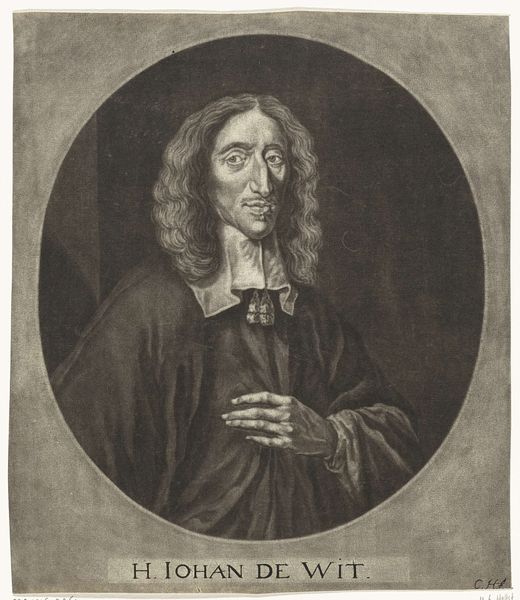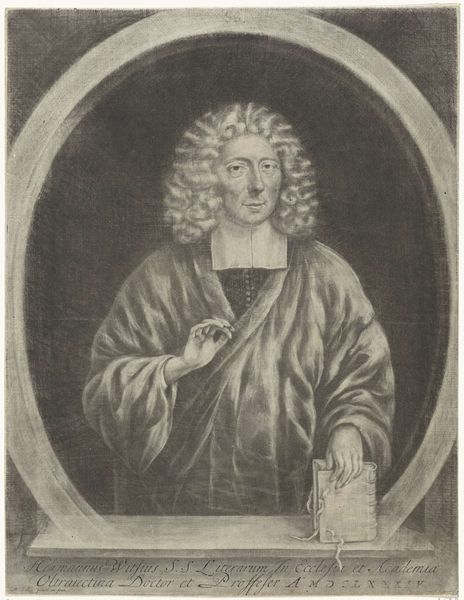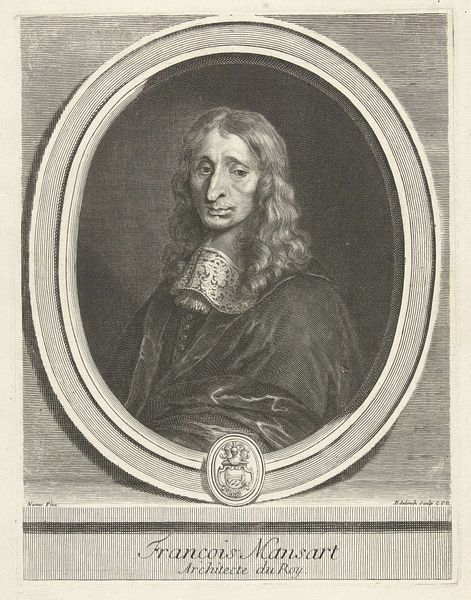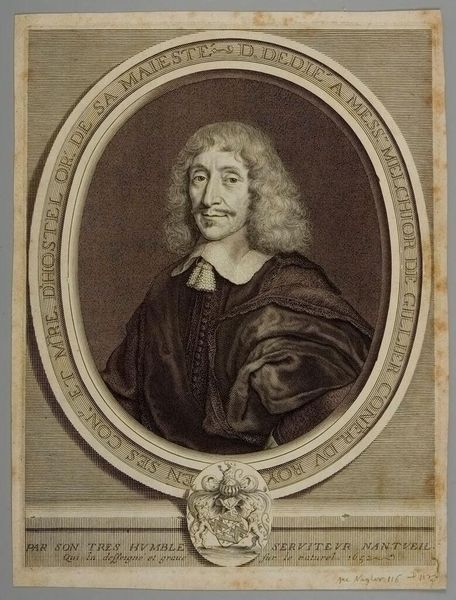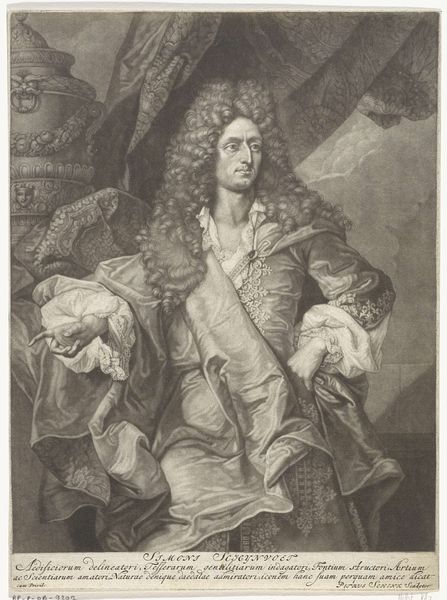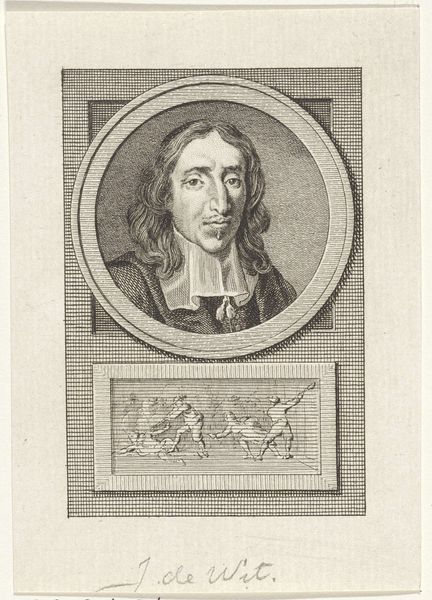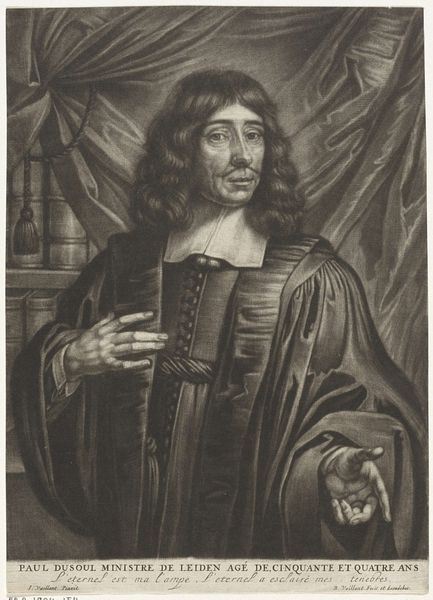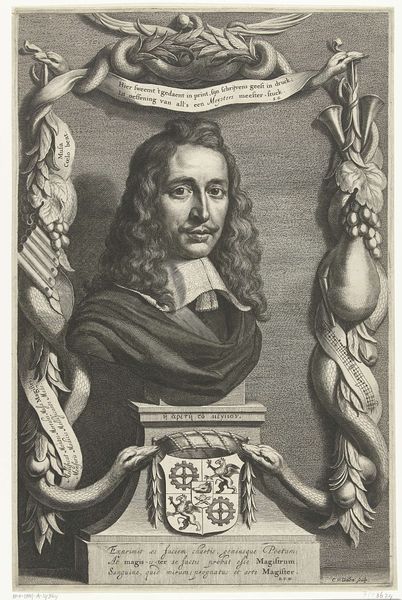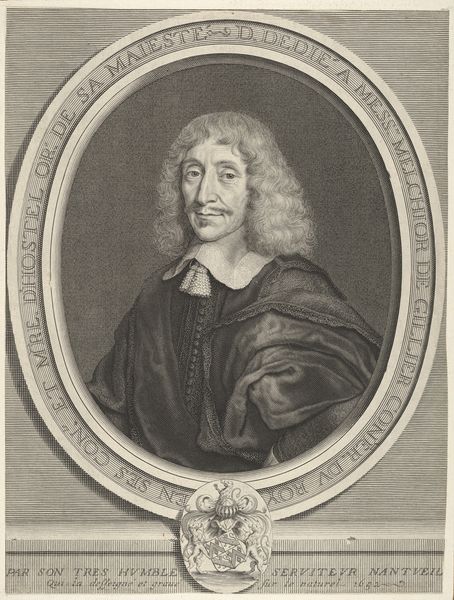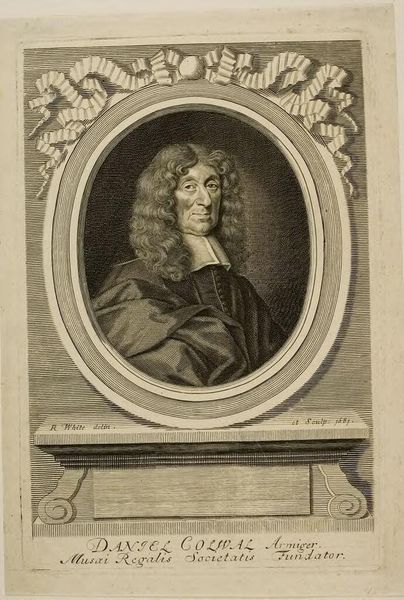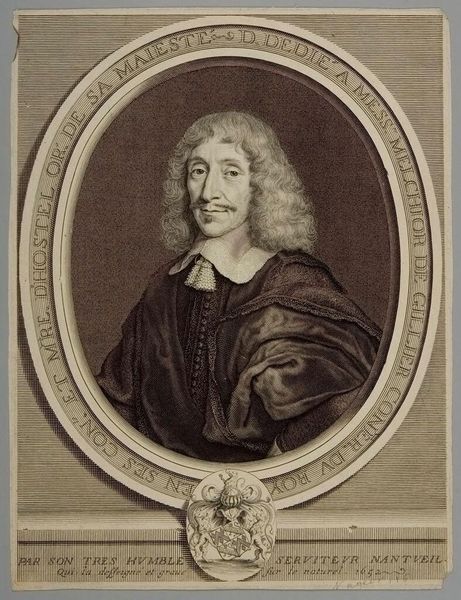
print, engraving
#
baroque
#
dutch-golden-age
# print
#
old engraving style
#
history-painting
#
engraving
Dimensions: height 379 mm, width 253 mm
Copyright: Rijks Museum: Open Domain
Editor: Here we have Caspar Netscher's "Portrait of Johan de Witt," created between 1642 and 1684. It's an engraving, a print. It strikes me as a very formal, stately portrait, almost as if de Witt is consciously projecting an image of power. What do you see in this piece? Curator: It’s more than just a stately portrait; it’s a deliberate construction of power, yes, but let’s consider the historical context. De Witt was a hugely influential figure during the Dutch Golden Age, but his political trajectory and ultimate demise were steeped in factionalism. How does Netscher’s portrayal engage with these competing narratives about de Witt's role? Editor: That's interesting. I hadn't thought about the factionalism. So the way he’s posed, the clothing… it’s all carefully chosen to project a specific idea of who he was? Curator: Precisely. The opulent robe, the setting…they all reinforce an image of authority and sophistication. But, knowing that this image was made and circulated during a time of intense political conflict, it begs the question: who was this image *for*? Was it an attempt to consolidate power, or perhaps a form of posthumous rehabilitation after his grisly assassination? Editor: So, the portrait becomes less about capturing his likeness and more about controlling his image and legacy. Curator: Exactly! And how that legacy continues to impact interpretations of Dutch identity and power dynamics even today. Who gets remembered and how? Who controls that narrative? Editor: This makes me realize that portraits can be really powerful forms of political statements. I never thought of them that way before! Curator: And now you can consider art through that lens. That’s the first step in unpacking how historical events are seen through a work of art.
Comments
No comments
Be the first to comment and join the conversation on the ultimate creative platform.
